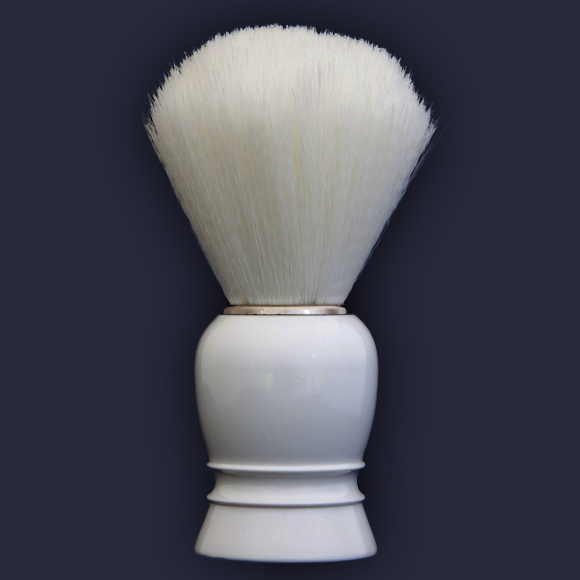
Almost all traditional wet shaving enthusiasts have at least one boar and one badger bristle brush in their shaving cabinets. However, when it comes to synthetic brushes, there are various opinions. Some people think that synthetic brushes cannot offer the performance of natural bristle brushes, while others think they feel artificial on the face. In fact, these prejudices were mostly justified until a while ago. The earlier synthetic brushes didn't really provide the feel and performance they were expected to.
The effort to produce synthetic bristles goes back to the 1920's. During the Second World War, when natural bristle trade from the eastern countries ceased, a new material was searched to replace it. In this period, the company Dupont was working hard to replace natural materials with synthetic materials. They came up with some kind of synthetic polymer fiber made from flexible filaments, which was patented as “Nylon”. This nylon fiber produced by Dupont was started to be used in all kinds of brushes. Thus, first synthetic nylon fiber shaving brushes emerged at this time. These first-generation synthetic brushes did not offer the softness of natural bristles due to their relatively thick and cylindrical bristles, and they were not preferred since their water and heat retention capacity was quite poor.
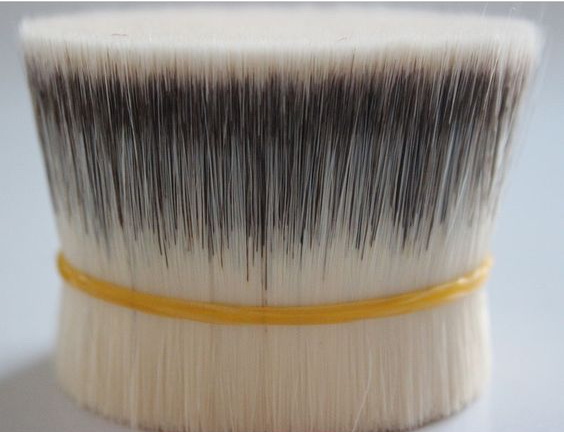
Dupont continued to develop its synthetic fibers with lots of patents under various names. The most notable one is the polyester material called “Taklon”. The bristles of most synthetic brushes are still produced from this material. Various manufacturers from different countries were in struggle to produce synthetic bristles that can hold water and heat to mimic natural bristles, obtaining various patents. Synthetic shaving brushes were still less preferred by the 2000s.
In 2015, with inclusion of badger into protected species in Europe, companies such as MenU, Mühle and Body Shop worked hard on their own synthetic bristles, thus second generation synthetic brushes emerged. The bristles on these were again cylindrical but slightly thinner. Although the brushes made from these bristles were slightly better, they were still not that efficient in heat / water retention and performance, and could not hold their form when wet.
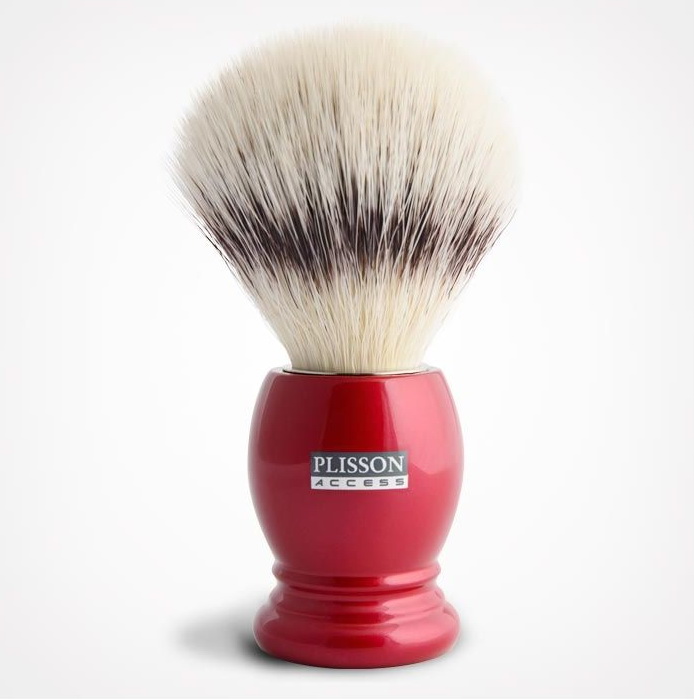
Following 2015, companies such as Kent, Omega, Mühle and Plisson made improvements on synthetic fibers. These softer third generation bristles were now tapered rather than being simply cylindrical and was painted to mimic the real bristles. Since they were thinner than previous generations, it was possible to put more bristles in the same size knot. This enabled better lathering performance and water retention, but they still couldn’t hold the water well enough and release it readily.
After a hard work of R&D, Mühle and Frank Shaving offered new and fourth generation brushes. Like the third generation bristles these were also tapered but in addition to that, the bristles were not fabricated straight but slightly wavy. This way, water retention issue, one of the main problems of the previous synthetic brushes, was mostly solved. Although they still couldn’t hold water like a good badger brush, they were close to boar bristle brushes. They were able to keep their heat better and offer a more natural feel on the face. Thus, for the first time, synthetic shaving brushes with satisfactory performance have emerged, and it was the time that synthetic brushes started to enter our shaving cabinets seriously.
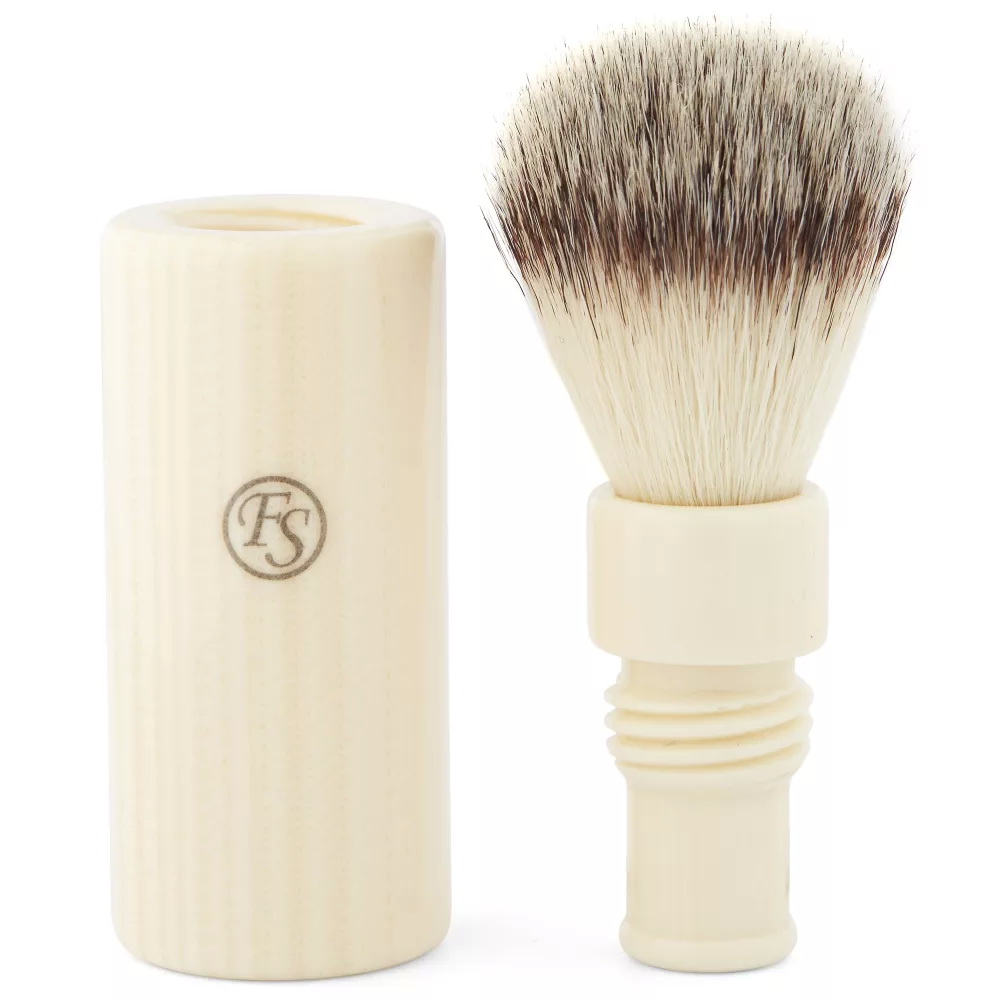
Currently, Yaqi Brush company produces some of the most efficient synthetic shaving brushes. The company which is famous for their “Tuxedo” knot, uses German “Basf” fibers instead of the classic Dupont Taklon fibers. Basf fiber has thermoplastic properties, it softens when heated and re-hardens when cooled. This makes it behave like natural bristles to a degree.
Most of the artisan shaving brush producers prefer Yaqi's tuxedo knots in their brushes. What makes the Yaqi stand out is that their brushes have very dense knots, with very finely tipped thin bristles. The tips are even softer than silvertip badger bristles. These dense packed knots have already passed horse and boar hair brushes performance-wise and are now heading to the kingdom of badger hair brushes. They have a good backbone, creating rich lather in a very short time from any kind of cream or soap, while the soft tips offering a comfortable massage.
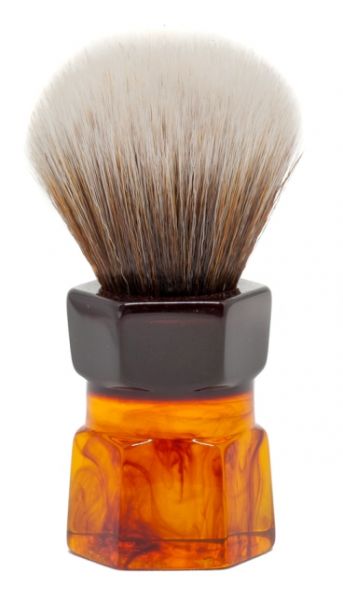
The brushes produced by Yaqi brush are currently some of the best and most preferred ones in the synthetic brush world. For the first time in the wet shaving community, a synthetic brush manufacturer was able to break the prejudices from people’s minds and synthetic brushes began to take place along with badger brushes in our shaving cabinets. Synthetic shaving brushes, which have been developed since the first generation, don’t have big flaws anymore. Speaking of flaws, let's look at the advantages and disadvantages of synthetic brushes before finish the article.
Their advantages:
Regardless of shaving soap or cream, they can create thicker and richer lather in bigger quantities with less material. They don't need to be soaked in water before use. They are more durable and hygienic than brushes made with natural bristles and they are odorless. They have antiallergic properties. They dry in a very short time. A boar hair brush can take more than 1 day to fully dry, while a synthetic brush dries in no more than 1-2 hours. In this respect, they are the most hygienic and practical brushes for travels and for the barbers where the frequency of usage is very high.
Their disadvantages:
The main disadvantage is still water and heat retention capacity. Although their water and heat holding capacities are greatly increased in recent generations, they are still behind badger brushes. Especially when face lathering, it is necessary to adjust the water-soap ratio carefully to avoid a dry lather. While the fourth generations feel softer on the face, they still do not have that natural feel of badger hairs. Those made from basf fibers gets a bit softer as they warm up, but since synthetic bristles do not absorb water they do not soften additionally during the use and keep their determined springiness and backbone from the production, this may be an advantage or disadvantage depending on the user.
In the folloving video we showed some important points when it comes to lathering with synthethic brushes:
In summary; synthetic brushes are becoming quite likeable today. It is possible to find synthetic shaving brushes in every sizes and shapes to suit any tastes. Many wet shaving fans are happy with their latest generation synthetic brushes. We, as Razorus, also recommend you to give modern synthetic brushes a chance. When you see the speed and quality of the lather built by synthetic brushes, you will regret for not having tried them before.
Have a nice watch and have a nice shave





